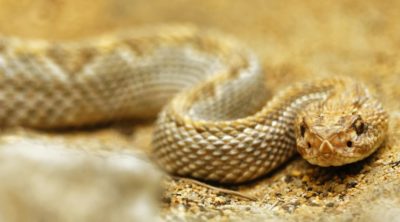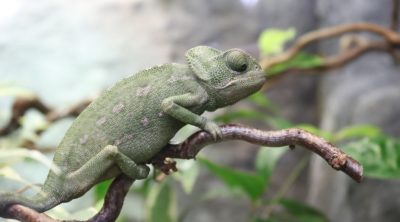
Join us as we embark on a journey to the arid regions of south-central Asia, to explore the habitat of leopard geckos in the wild, with the intention of creating a replica of the same in captivity.
Leopard geckos (Eublepharis macularius), as their name suggests, are yellow in color and have black spots all over their body. They measure roughly about 6 – 10 inches in length. Being insectivorous in nature, they mainly feed on small insects, like beetles and spiders. At times though, adult geckos are known to take on baby snakes and scorpions as well. Though nocturnal, the species is easy to care for, courtesy, its docile temperament, which makes it one of the most sought-after pets in the world.
Range and Habitat
Leopard geckos are native to the arid regions of south-central Asia. The wild population of this species is mainly concentrated in the vast range, spanning southern Afghanistan, entire Pakistan, and dry regions of northern India. Their natural habitat is typically characterized by rocky, dry grasslands and arid deserts, with scarcity of water and vegetation.
The species have adapted themselves quite well to the harsh environment here; one aspect of this adaptation being the nocturnal behavior to avoid scorching heat during the day. While geckos are typically characterized by their immovable eyelids, leopard geckos prove to be an exception with eyelids that protect their eyes in the harsh, dusty environment of their native habitat.
Habitat in Captivity
The size of the aquarium you will require to house your pet geckos, will depend on the number of geckos you intend to keep. For a single gecko, a 10-gallon tank will be more than enough, while two geckos will require a 15-gallon tank, and three or four geckos will require a 20-gallon tank. The tank should not be too small, or too big for that matter. If the tank is too big, there are chances that your pet will stray away from the source of heat, which, in turn, will affect its health.
Make sure that you opt for a tank which is secured at the top. It should facilitate proper ventilation, but should not allow the gecko to escape. Instead of providing a substrate, you should ideally provide a flat flooring of tile, slate, or plain paper. These geckos have the tendency to ingest sand or other materials used as substrate, which can eventually result in some intestinal problems. The best option is to use plain paper, which can be changed when soiled, thus keeping the surrounding clean and healthy for your pet.
It is mandatory to provide your pet some spots to hide and a basking area to control its body temperature. As far as spots to hide are concerned, you can create one or two from plastic food storage containers. When it comes to a source of heat, you have two options: you can either place a heating mat beneath the tank, or place a heating lamp at the top of one end of the tank. The latter is a better option as it will keep the other end of the tank cooler. The leopard gecko is a nocturnal animal and therefore, requires cold spots as well.
The bottom line here is that leopard geckos are ideal pets, especially for first timers. In captivity, the lifespan of this species ranges between 10 to 15 years. However, complying with the basics of gecko care discussed here can ensure that your pet gecko lives for up to 20 years or even more.

